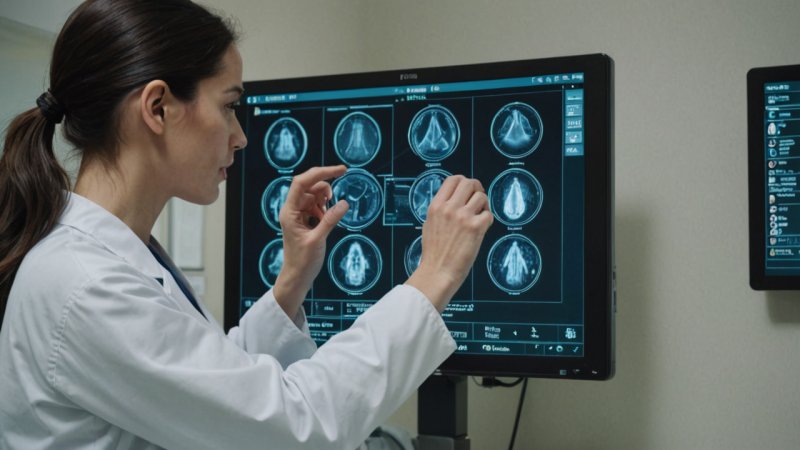In an era where digital transformation is revolutionizing the healthcare sector, the significance of robust network protocols cannot be overstated. As healthcare data becomes increasingly digitized and interconnected, network protocols serve as the backbone that facilitates communication, data exchange, and interoperability among diverse health information systems. These protocols are not merely technical specifications; they are critical frameworks that ensure data integrity, security, and efficiency in the management of patient information. In this article, we will explore the various types of network protocols employed in health information systems, their applications, and their impact on healthcare delivery.
The Fundamentals of Network Protocols
Network protocols are established rules and conventions that allow devices to communicate over a network. They define how data is formatted, transmitted, and received, ensuring that disparate systems can understand and process the information being exchanged. In healthcare, these protocols are essential for enabling secure and efficient communication between various stakeholders, including healthcare providers, patients, and administrative systems.
Types of Network Protocols in Healthcare
There are several key network protocols that play a vital role in health information systems:
- Health Level Seven (HL7): HL7 is a set of international standards for the transfer of clinical and administrative data between software applications used by healthcare providers. HL7 facilitates interoperability by allowing disparate systems to communicate using a common language.
- Digital Imaging and Communications in Medicine (DICOM): DICOM is a standard for transmitting, storing, and sharing medical images. It ensures that imaging devices and systems can work together seamlessly, enabling the efficient exchange of diagnostic images across different platforms.
- Fast Healthcare Interoperability Resources (FHIR): FHIR is a modern standard developed by HL7 that utilizes web technologies to enable easier data exchange. It is designed to be more flexible and easier to implement compared to its predecessors, making it ideal for mobile and web applications in healthcare.
- Transmission Control Protocol/Internet Protocol (TCP/IP): TCP/IP is the fundamental suite of protocols that underpins the Internet. In healthcare, TCP/IP facilitates the reliable transmission of data across networks, ensuring that patient records and other critical information reach their destination without errors.
Applications of Network Protocols in Health Information Systems
Network protocols in healthcare have a wide range of applications that significantly enhance the quality and efficiency of care delivery:
Interoperability and Data Exchange
One of the primary applications of network protocols is ensuring interoperability among different health information systems. For instance, when a patient visits multiple healthcare providers, HL7 and FHIR protocols enable seamless sharing of electronic health records (EHRs), lab results, and medication histories. This interoperability allows for comprehensive patient care, reducing the likelihood of errors and improving health outcomes.
Telemedicine and Remote Patient Monitoring
With the rise of telemedicine, network protocols have become crucial in facilitating virtual consultations and remote patient monitoring. Protocols like TCP/IP enable secure video conferencing and data transmission between patients and providers. Additionally, FHIR allows for the integration of remote monitoring devices, ensuring that vital signs and health data are accurately transmitted for real-time analysis.
Data Security and Compliance
Data security is paramount in healthcare, where sensitive patient information must be protected from unauthorized access. Network protocols incorporate security measures such as encryption and authentication, ensuring that data is transmitted securely. For instance, secure versions of protocols like HTTPS (Hypertext Transfer Protocol Secure) and VPN (Virtual Private Network) protocols are widely used to safeguard patient information during transmission, helping healthcare organizations comply with regulations such as HIPAA (Health Insurance Portability and Accountability Act).
Case Studies: Successful Implementation of Network Protocols
To illustrate the practical applications of network protocols in health information systems, let's consider a few case studies:
Case Study 1: Integrating EHR Systems in a Multi-Hospital Network
A multi-hospital network implemented HL7 standards to facilitate the integration of their EHR systems. By using HL7 messaging protocols, they were able to streamline the exchange of patient data between hospitals, reducing time spent on administrative tasks and improving the accuracy of patient records. As a result, the hospitals saw a 30% reduction in patient wait times and a significant increase in patient satisfaction.
Case Study 2: Telemedicine Implementation During the COVID-19 Pandemic
During the COVID-19 pandemic, a healthcare organization rapidly adopted telemedicine solutions using FHIR and TCP/IP protocols. By enabling video consultations and remote monitoring, they were able to continue providing care while minimizing the risk of virus transmission. The implementation of network protocols allowed them to scale their telemedicine services to accommodate a 50% increase in patient visits within a few months.
Challenges and Future Directions
Despite the benefits, the integration of network protocols in health information systems does present challenges. These include the need for standardization across different systems, the complexity of implementing new technologies, and ongoing concerns about data security. However, the future of network protocols in healthcare looks promising, with ongoing advancements in artificial intelligence and machine learning poised to further enhance interoperability and data exchange capabilities.
As healthcare continues to evolve, the role of network protocols will remain crucial in shaping the future of health information systems. By fostering interoperability, ensuring data security, and facilitating seamless communication, these protocols will continue to drive improvements in healthcare delivery, ultimately leading to better patient outcomes.






